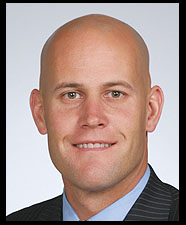As a business owner, what are you currently doing to control the spiraling cost of health coverage for your employees? Are you being forced to change carriers in hopes of finding a “cheaper” option? Or are you forced to shift more of the cost to employees through plan changes or premium increases just to be able to offer the benefit?
More and more employers are compelled to take these types of actions because of the rising cost of providing health coverage. In fact, the current rate of premium increases is somewhere between 2 to 4 times the rate of inflation. If your employee base is somewhere between 50 and 100 employees or more, it might be time to consider self-insuring your health plan. The following is how selfinsurance works:
1. The employer decides on a plan design based on the needs of the company and its employees.
2. The plan document is drafted and provided to covered employees to communicate their covered benefits.
3. The employer funds the risk directly from contributions by the employer, the employee, or both, and pays the claims for benefits defined in the plan document.
4. Stop Loss insurance is designed to limit the employer’s loss to a specific amount so that catastrophic claims don’t affect the financial stability of the plan or the company.
5. A Third Party Administrator (TPA) administers the plan.
The following are some key advantages to self-insuring your health plan:
1. Lower cost of operation. The administrative costs for a self-insured plan administered through a TPA are lower than those charged by a full-service insurance carrier.
2. Control of plan design. The employer has complete flexibility in determining the plan design they want to provide for their employees.
3. Cash flow benefit. The employer’s cash flow may be improved when money formerly held by the insurance carrier for reserves is freed for use by the employer.
4. Effective claim management. TPAs are evaluated on their ability to provide fast, efficient and accurate claims management to help reduce the cost to the plan.
5. Managed care services. TPAs offer a variety of services that can help manage the overall cost of the plan, such as utilization review, case management and advanced claim auditing.
6. Risk management through Stop Loss insurance. The employer may choose the amount of risk they want to take on by selecting an appropriate Stop Loss coverage. This allows you to not have to insure small claim amounts.
7. Elimination of most premium tax. There is no premium tax for the selfinsured claim fund. Premium tax is applied only to the Stop Loss premium, which is significantly less than a fully-insured plan.
8. Return on investment for reserves. The interest earned on reserves are controlled by the employer.
9. Mandatory benefits are avoided. State mandates are avoided because self-funded plans are regulated by federal legislation.
10. Carrier profit margin eliminated. The profit margin an insurance carrier builds into their premium is eliminated for the bulk of the plan.
This is just a brief explanation of what self-insuring is and what it involves. If you’re interested in discussing whether this concept is right for you, please feel free to contact us.

